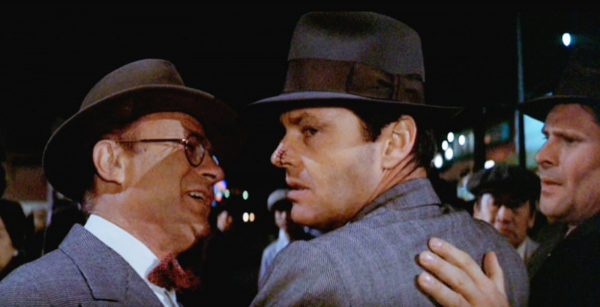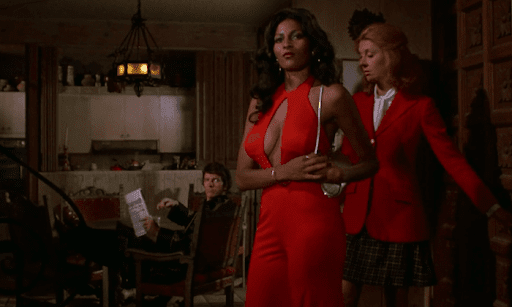We go back half a century to offer up ten essential films from 1974…
It’s incredible to think that it’s been half a century since the year 1974. As a year of cinematic offerings, it takes some beating too with a slew of incredible films. This was still right in the midst of Hollywood’s golden period of cinema with edgy and creative filmmaking. This was a year before Jaws started a change in the landscape that was cemented by Star Wars in 1977, where the blockbuster began to take over.
So what are the highlights of 1974? We’ve got a theatrical debut for one of the all-time greats, whilst another master of the arts had not one, but two masterpieces out that year. Here are 10 essential films from 1974:
The Godfather Part II

Francis Ford Coppola was riding the wave of success and acclaim from The Godfather, establishing himself as one of the most powerful directors around. Let’s face it, the first Godfather was so exceptional, that it meant the label of master was attached right away. Not bad for a director whose previous works (including cutting his teeth with Roger Corman) went by largely unnoticed.
A sequel was greenlit and Coppola managed to do the remarkable and match his first film punch for punch. Even back before the blockbuster machine was really in full swing, sequels still tended to be a law of diminishing returns. The Godfather II was even more grandiose than the first, playing out two timelines and featuring Robert De Niro as a young Vito Corleone (played by Marlon Brando in the first film). Exceptional performances all around and a special mention for John Cazale whose short-lived career as a character actor saw him star in only five films (all masterpieces). As with his great performance in Dog Day Afternoon the following year, Cazale was very unlucky not to get an Oscar nomination here as the hapless, Fredo.
The Conversation

Not content with making a film many argue is the greatest of all time, Francis Ford Coppola decided to plug a gap between his two gangster films. It was seen as something more insular, quicker and you might say “easier” than a Corleone production tended to be. It was also a film where Coppola with his newfound heft, could riff a little, and try a few things.
For a gap filler seen as a perfect antipathy to a Godfather-level production, the end result shows no signs of being half-cocked. The Conversation is another masterpiece on Coppola’s CV. Intensely focused on a single protagonist, it’s an espionage thriller that slowly dials up the paranoia as a surveillance expert (played by Gene Hackman in a career-best performance) records more than he bargained for with his hi-tech sound equipment. The film might also have the best sound mixing and editing ever committed to film. It’s an incredible film, brimming with tension and one that people still seem to miss, but being sandwiched between two Godfather epics has something to do with that.
Chinatown

Polanski was already well-established in Hollywood as one of the most gifted directors around. He’d translated success in European cinema over to America and moved from doing intimate and intense psychological horrors to doing grander epics. Come 1974, he made perhaps his best film, Chinatown. This love letter to classic noir cinema is set during the era when the genre was hitting prevalence. Rather than becoming a simple pastiche it takes all the great elements of detective fiction and noir and infuses it with a contemporary (back then) aesthetic.
The film is a masterclass in screenwriting, set-up and payoff, pacing, editing, shot composition, directing, editing and music. Okay, in everything. The way Robert Towne and Polanski weave the story, gradually unveiling new layers as the film progresses and new dimensions to the main characters is amazing. This could well have the greatest screenplay ever written. The film doesn’t pull its punches either, really exemplifying the auteur cinema of that era where rarely did a protagonist ride off into the happily ever after. Jack Nicholson delivers one of his best performances, as does Faye Dunaway.
A Woman Under The Influence

John Cassavetes and Gina Rowlands made a lot of cinema magic together but A Woman Under the Influence is the pick of the bunch. It’s a raw, unflinching and gripping look at a woman whose mental illness and addictions threaten to destroy her life. Tough to watch but impossible to look away from, Cassavetes captures such incredible rawness and as a deity of indie cinema, few have matched his work.
Gina Rowlands delivers one of the greatest performances of all time, and the fact she didn’t win an Oscar for this is surprising, but perhaps also a testament to a nominee lineup that was immense that year (in every acting category).
Alice Doesn’t Live Here Anymore

The previous year had been pretty stellar for director Martin Scorsese and star, Ellen Burstyn. Scorsese had his big gangster breakout with Mean Streets, whilst Burstyn starred in and received an Oscar nomination for, The Exorcist. The two came together, along with Kris Kristofferson and Jodie Foster for Alice Doesn’t Live Here Anymore.
Burstyn is incredible (and won the Oscar that eluded Rowlands) as the widow with aspirations to become a singer who gets caught up in a romance with Kristofferson. There are shades of A Star is Born but injected with a little more grit than the versions up to that point (Kristofferson would later star in one with Babs Streisand in 76). It’s not elite Scorsese but this is still a highly accomplished and remarkably assured work from a director about to hit master status with Taxi Driver in 76.
The Texas Chainsaw Massacre

Films like The Omen and The Exorcist seemed to propel horror up to a level of popularity and standing, previously unseen. What The Texas Chainsaw Massacre did was pull it back to the underground. It was rough, independent and cheap, not unlike a forefather like Night of the Living Dead. Texas Chainsaw Massacre had plenty of accompanying controversy whilst critics were initially reviled by the aesthetic and bluntness of the violence.
However, its pop cultural impact was huge, foreshadowing the impending boom of VHS (and video nasties) where a limitless outpouring of low-budget independent movies were pumped out. In fact, whilst the film had an initial impact on late-night and drive-in showings, it had a resurgence in the early days of home video too. The lasting legacy remains strong and its roughness is a key attribute giving the film a grounded grittiness that feels disturbing. It also features one of the most unforgettable final sequences ever.
The Sugarland Express

Steven Spielberg had made quite the impression with Duel, his gripping TV thriller. In 74 he delivered his big screen debut with The Sugarland Express which helped propel him and leading lady, Goldie Hawn whose star was rising back then. Based on a true story, Hawn is a mother deemed unfit to look after her young son and in a desperate bid to reclaim the boy (now in care), she helps her convict husband (William Atherton) escape. The pair go on the lam, kidnapping a cop along the way and gaining the public’s attention as a manhunt ensues.
Spielberg has undoubtedly made better, but he reemploys the gift for perpetual tension and rising stakes he employed with Duel and already showed a grasp of material and style that was rock solid by the time his next film (Jaws) rolled around. It’s a rollicking ride and one even Spielberg aficionados have missed.
Alice in the Cities

Wim Wenders loves a road movie. His earlier career was built on several notable films like Wrong Move, The Goalkeeper’s Fear of the Penalty Kick and Kings of the Road. Then later cemented into wider cult acclaim with Paris, Texas.
Alice In The Cities sees a struggling writer reluctantly tasked with escorting a stranger’s daughter across the country to find her estranged grandmother. Much like Wenders’ other great works, there’s an indefinable, almost lackadaisical magic here with our two meandering protagonists making their way across the country and unearthing clues to find their destination. As he would for so many pictures, Wenders calls upon Robby Muller’s masterful cinematography to create simple yet spellbinding images.
Foxy Brown

Blaxploitation cinema was right in the midst of a boom in 1974. It was a year that saw a slew of great grindhouse favourites like TNT Jackson and Black Belt Jones but the best of the best had to be Foxy Brown. Pam Grier is incredible as the woman out for revenge after her boyfriend is murdered by a drug gang. She infiltrates the gang and starts taking out the trash.
The film left an inedible mark on many aspiring black filmmakers and actors and quite clearly left a big impression on Quentin Tarantino too. It’s a perfectly lithe 90 minutes full of memorable moments and did I mention Pam Grier is incredible?
Blazing Saddles

What a choice for Mel Brooks bangers this year. Blazing Saddles or Young Frankenstein? Let’s go with Blazing Saddles but it’s a close call to round out our essentials with some comedy. Both films could be quoted verbatim by many, but Blazing Saddles probably has the more lasting legacy (albeit more recently it’s been the subject of half-hearted cancel talk).
Brooks just hit the absolute peak of his powers this year and arguably Gene Wilder too (who stars in both). Saddles is a rollicking comedy Western with shedloads of satire and gags. Cleavon Little and Brooks himself more than match Wilder’s brilliance here. “Where the white women at?”
Honorable Mentions:
The Taking of Pelham 123, The Parallax View, Ali: Fear Eats the Soul, Young Frankenstein, The Odessa File, The Gambler, The Night Porter, Yakuza, Legend of the Seven Golden Vampires and Murder On the Orient Express.
What’s your favourite film from 1974? Let us know on our social channels @FlickeringMyth or hit me up @jolliffeproductions…











